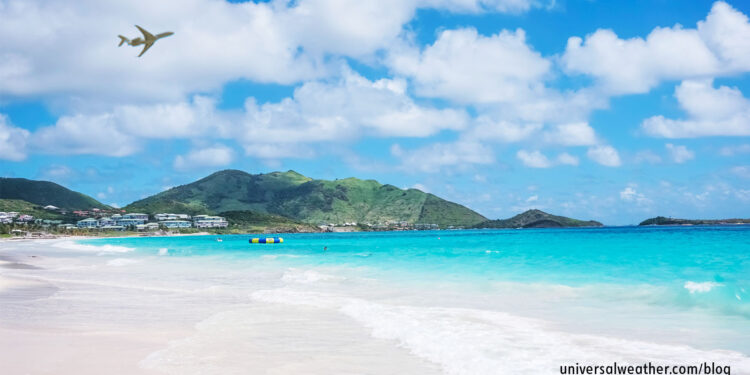Operating to St Maarten (TNCM) – Top Operator Considerations

St Maarten is one of the busiest and most congested locations in the Caribbean during peak travel periods. If you’re competing with the rest of the general aviation (GA) world – in planning an operation to TNCM during high season – you’ll need to orchestrate aircraft parking and hotel arrangements well in advance.
The following is an overview of what you need to know:
1. Peak season considerations
St. Maarten (TNCM) is becoming more and more congested. The peak season is December 15-April 14, and aircraft parking is in high demand at that time. It’s always best to make requests for peak-season parking no later than August, but, in many cases, requests are submitted on short notice. Operators will always be permitted to drop and go – even when no overnight parking is available. However, due to the high number of aircraft on the ground, you may face considerable delays after dropping your passengers.
2. Aircraft diversions occur from time to time
During the peak season – particularly December 26-28 – TNCM runs out of space. That could mean that your inbound flight may be diverted to an alternate airport. Such cases require filing another flight plan and waiting for approval and have the potential to create delays for your passengers. Alternates to consider, if diverted from TNCM, include Antigua (TAPA), Anguilla (TQPF) and San Juan (TJSJ). Note that if you land at TJSJ from a non-US airport, you’ll need Customs, Immigration and Quarantine (CIQ) clearance, and arrangements for that are required in advance. While the suggested alternates offer full aircraft support services, and parking is not as tight as at TNCM, there may also be congestion issues to consider at these locations.
3. Permit requirements
All operations to TNCM need Prior Permission Required (PPR), and you’ll normally need five days’ lead time to secure that. The PPR requirement is to arrange aircraft parking for the duration of your intended stay at St. Maarten. PPR revisions depend on parking availability. Short-notice PPR requests are often possible during the off-peak season but can be difficult to obtain during the peak season. Note that charter operations to TNCM require charter permits, and the lead time is three working days. Along with each landing permit request, you must provide documents like your Air Operator Certificate and worldwide insurance.
4. Jet fuel supplies may be limited at this location
Aviation fuel runs out at TNCM from time to time – particularly during the peak season. At certain times, fuel volumes may be rationed, and you’ll only be able to expect partial fill-ups. If the local fuel supply is likely to be an issue, operators should consider tankering fuel into TNCM or, alternatively, plan an additional stop for fuel uplift after departing the island.
5. Arrange in-flight catering in advance
During the peak season, it’s recommended to allow 48 hours’ prior notice for in-flight catering requests. That allows your caterer time to make the needed arrangements. Be mindful that requests for items that are not local take additional time to source. It’s always best to order fresh local items – such as seafood – and items that are in season locally.
6. Plan in advance for hotels and local transport
St. Maarten hotels routinely sell out during the peak season. When possible, try to book hotel rooms by August if you’re planning to travel there during the peak season. After that, if rooms are still available, prices will be high, with extended cancellation policies and/or non-refundable reservation requirements.
It’s also best to consider and confirm local transport options well in advance of day of operation. Prepaid transport (car with driver) is recommended; however, rental vehicles are also a good option.
7. Avoid high-traffic periods at TNCM
This location experiences peak air traffic movements 1200-1700, local, daily. When possible, try to avoid arriving/departing during these hours.
8. Additional reading
Business Aviation Travel in the Caribbean During Peak Season
Conclusion
When planning operations to TNCM – especially during the peak season – plan as far ahead as possible and arrange any required fuel uplifts well in advance. Always try to avoid last-minute schedule changes during the peak season, as such changes and change requests can delay your operation and result in long ground delays for passengers.
Questions
If you have any questions about this article or about operating to TNCM, contact me at jessicahosmer@univ-wea.com.




